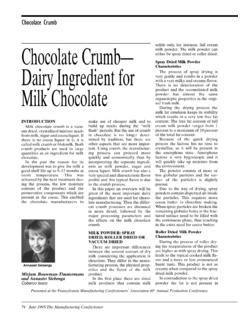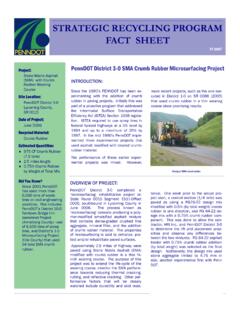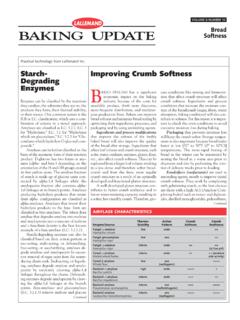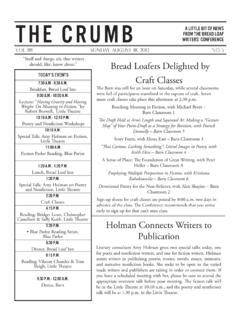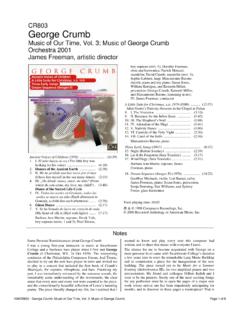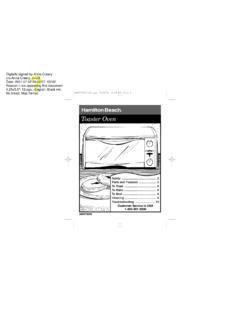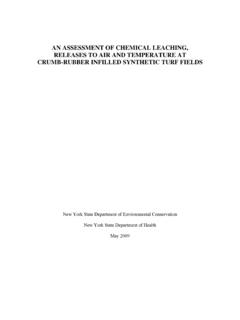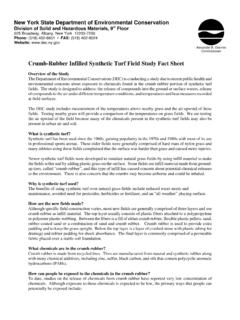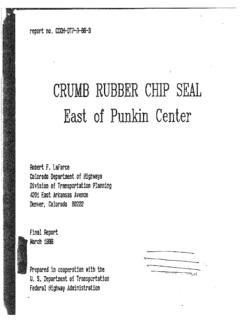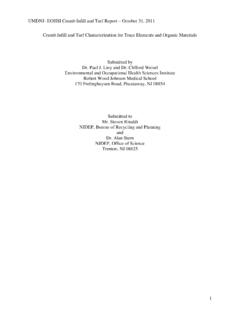Transcription of In the late 1800’s many states tried Tire Rubber - Asphalt
1 In the late 1800 s many states tried Tire Rubber Modified project, some had problems, the industry vowed never to try it again!!! Tire Rubber Modification History Tire Rubber Modification History In the early nineties ISTEA mandated use of tire Rubber in order to get federal funding. Tire Rubber technology was still not well develop. Some projects had problems and the industry vowed never to try it again!!!! Types of Tire Rubber Modification Processes Several Tire Rubber Modified Asphalt Systems Wet Method ( crumb Rubber / Asphalt Rubber ) Dry Method Terminal Blend Terminal Blended Hybrid Types of Tire Rubber Modification Processes Wet Method (AR, CRM) crumb Rubber Asphalt Cement Oldest of tire Rubber Asphalt technologies MacDonald Method started in 1960 s Strong association RPA promoting crumb Rubber technology (AR,CRM) Dedicated ASTM specification defining this system as Asphalt Rubber (AR) ASTM D 8-88 5%-15% crumb Rubber 40 to 80 mesh top size Types of Tire Rubber Modification Processes Wet Method - Requires thorough mixing of the crumb Rubber in hot Asphalt cement and holding the resulting blend at temperatures (375 F to 450 F)
2 For a designated minimum period of time (typically 45 minutes) to permit an interaction between the crumb Rubber and Asphalt . -Requires special blending equipment. -Requires constant agitation once mixed. -Since the Asphalt is modified, most state now consider the contractor the binder supplier. Must do the appropriate QC certification and testing. -AC contents are typically higher depending on crumb Rubber particle size. -Tire Rubber filler must be considered when determining actual binder content within the mix. Types of Tire Rubber Modification Processes Wet Method Types of Tire Rubber Modification Processes Dry Method -Any method that includes scrap tire crumb Rubber as a substitute for 1 to 3 percent of the aggregate. -The crumb Rubber acts as a Rubber aggregate in the paving mixture and is added to the plant before the hot AC is introduced.
3 -Although there may be some limited interaction of the CRM with the Asphalt cement during .. -mixing in the AC plant, silo storage, hauling, placement and compaction, the Asphalt cement is not considered to be modified in the dry process. -Requires both mix time and temperature to be increased in the plant Types of Tire Rubber Modification Processes Dry Method Types of Tire Rubber Modification Processes Wet and Dry Mixes In the wet mix process, Rubber and bitumen are reacted together at high temperature to produce a crumb Rubber binder. The crumb Rubber binder is added to aggregate in a mixing plant in the same way as any other binder. In the dry process, however, dry Rubber particles are added to aggregate and bitumen in a pugmill at the Asphalt mixing plant. The Rubber is usually mixed with the aggregate prior to bitumen addition but is still considered part of the binder.
4 John Oliver, ARRB Transport Research Types of Tire Rubber Modification Processes Terminal Blend - Tire Rubber is blended with hot Asphalt cement at the refinery or at an Asphalt terminal and transported to job site in tankers. - Polymers and other additives may also be included -Two types of Terminal Blend Processes -Vestenamer reacted system -A polymer added to the binder to react the GTR with the binder - +Summary+ -Smaller Sized Tire Rubber particles reacted into Asphalt (-60 mesh) - Both systems have visible crumb Rubber particles -Tire Rubber component is a filler within the Asphalt cement - Tire Rubber particles can be screened from Asphalt cement -Tire Rubber Settlement and Phasing is usually an issue -Although some supplier are working to fix +Sumary+ Seneca Asphalt Modified Asphalt Solutions Types of Tire Rubber Modification Processes Terminal Blended Hybrid - Tire Rubber is blended with hot Asphalt cement at the refinery or at an Asphalt terminal, transported to job site in tankers and is handled the same as any neat Asphalt cement.
5 -Tire Rubber is fully dispersed into the Asphalt medium - Meets ASTM D2042 Solubility Standards -Tire Rubber particle size is less than 1 micron -Meets all PG grading test -No special testing equipment or test specification - Asphalt cement is now modified with tire Rubber -Tire Rubber Modified Asphalt is Homogeneous Mixing and Compaction Temperatures remain constant -Excellent Stability -No Settlement or Phasing, Does Not Require Agitation - Polymers and other additives may also be included Particle Size Chart (microns) 1/16 inch ( ) 1,680 40 mesh silica sand ( ) 425 200 mesh sieve ( ) 75 Mold 3 - 12 Talcum Dust (baby powder) ( ) - 50 Bacteria - 40 Anthrax 1 - 5 TRMAC 25% Tire Rubber Asphalt Cement ( ) - 1 Sea Salt - Viruses - 100,000 pound Tire Rubber Silo Mix Tank Processing Vessel Rotary Valve Processing Pumps Tire Rubber is fed Pneumatically TRMAC Processing Facility Alon Refinery Big Spring, TX 1993-2011 Valero Alon PPC Alon/PPC McCall NuStar Alon/PPC Alon Alon/PPC Valero Jebro Inc.
6 ARTC MO Petro Products and Processing Using Terminal Blend Hybrid TR System Tire Rubber Modified Paving Grade Asphalts Cements Standard PG Grades Dense Graded Mixes PG Plus Grades High Performance Mixes Warm Mix Standard Grades Dense and Open/Gap Graded Mixes Warm Mix Polymer Modified Grades - Dense and Open/Gap Graded Mixes Hot Applied Chip Seal Binders Neat and Polymer Modified Tire Rubber Modified Cutback Asphalt Cements (MC) Medium Cure Graded (SC) Slow Cure Graded Tire Rubber Modified Asphalt Emulsions Rapid Set Chip Seal Micro Surfacing Slurry Seals Standard Slurry Seals Cold In-Place Recycling Cold Mix Tire Rubber Modified Seal Coats Tire Rubber Modified Surface Sealer Tire Rubber Modified Fog Seals of tire Rubber modified binders has been applied in pavement preservation and hot mix applications by Wright Asphalt of tire Rubber has been used by Wright Asphalt within these tire Rubber modified binders Wright Asphalt kept out of landfills!
7
